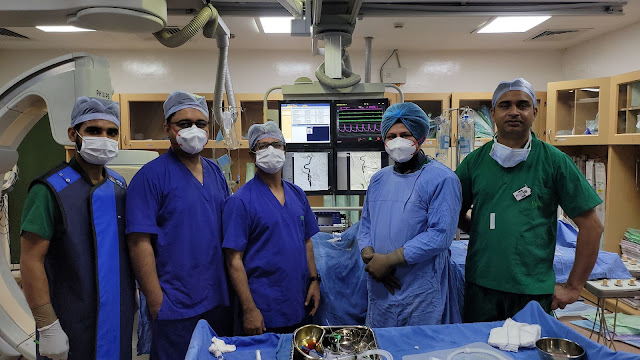Chemical Lumbar Sympathectomy
The sympathetic nerves that run along the front of the backbone, near to but outside the spinal column, are injected with a chemical sympathectomy. Lumbar sympathectomy is used to treat leg and foot pain caused by a lack of blood supply, as well as to aid in the healing of leg and foot ulcers. To cure excessive perspiration in the foot and to reduce leg and back pain caused by spinal canal stenosis.
Lumbar Sympathectomy.
ü A collection of nerves in your lower back is known as the lumbar sympathetic chain. The blood supply to the legs is controlled by these nerves.
ü A lumbar sympathectomy is a technique in which the sympathetic nerves are blocked and the blood supply to the skin in the leg is increased. This can help you feel better and heal faster.
ü Phenol is a drug that is commonly injected and can provide pain relief for up to 9 months.
ü Lumbar sympathectomy is used to treat leg and foot pain caused by a lack of blood flow; to aid in the healing of leg and foot ulcers; to relieve leg and back pain caused by spinal canal stenosis, and to cure excessive foot perspiration.
Risks of sympathectomy
- Bleeding
- Infection
- Pain
- Sweating in other regions of the body is more intense.
- During the procedure, a stroke or heart attack may occur.
- Pneumonia due to a collapsed lung
- Extensive use of a breathing machine is required.
- During the surgery, nerves or blood vessels are injured.
- Arms' sluggishness
- On the underside of the arms, there is a burning sensation.
Horner's syndrome is a condition that results from nerve damage and causes eyelid drooping and problems with the pupils.
The problem is not solved by surgery.
Your wound will be stitched or surgically stapled closed following the amputation. A bandage will be applied, and a tube will be inserted beneath your skin to remove any excess fluid. To prevent infection, the bandage should be left on for a few days.
The sympathetic nerves that run along the front of the backbone, near to but outside the spinal column, are injected with a chemical sympathectomy. In advanced PVD, CT-guided lumbar sympathectomy with anhydrous ethanol is a safe and effective way to avoid amputation. CT guidance improves needle placement accuracy, reduces the number of ablative chemicals required, and may lessen the number of problems reported in the literature. Sympathectomy is a minimally invasive operation that involves cauterizing (cutting and sealing) a segment of the sympathetic nerve network that runs down the back inside the chest, parallel to the spine (small incisions of 2–3 inches long, done under general anesthesia).
Dr. Sandeep Sharma is the Best doctor for Acute Stroke Mechanical Thrombectomy. He is an expert in both suction retrieval and stent retrieval and uses both techniques in perfect combination.




Comments
Post a Comment